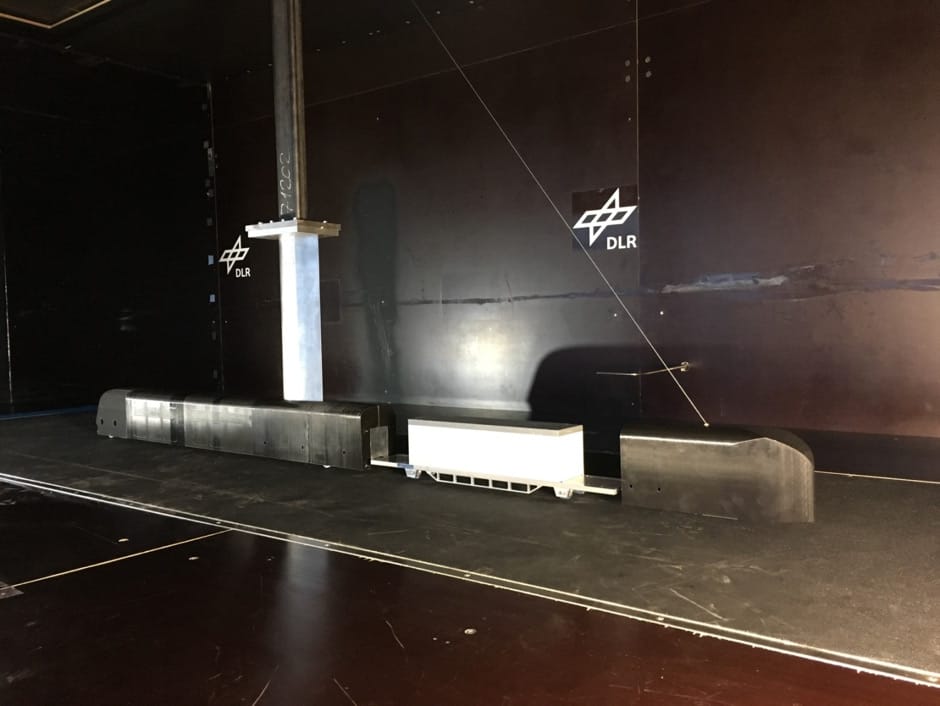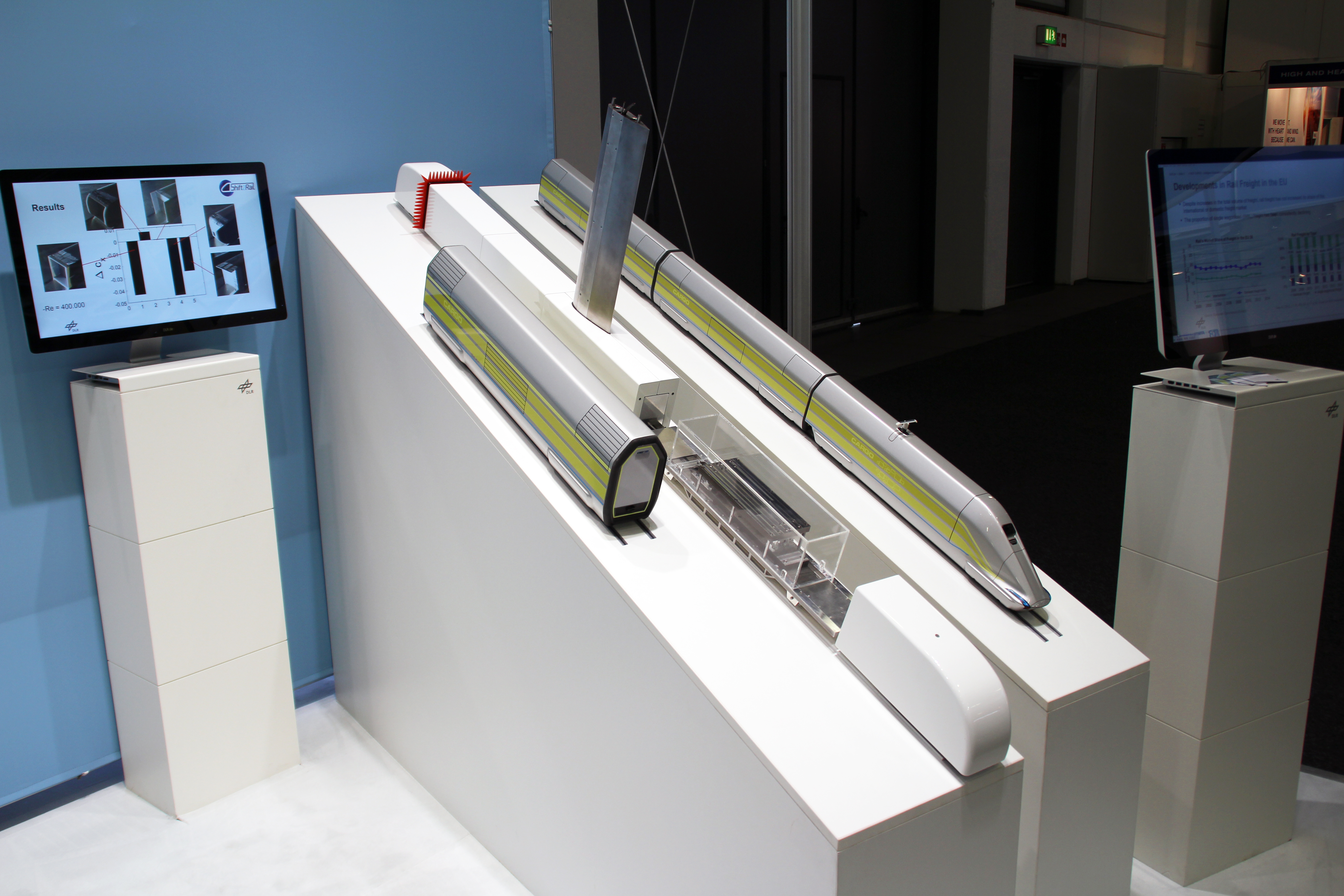The aerodynamic drag can account for up to 80% of the total resistance of a freight train at a speed of 115 km/h. This resistance thus makes a significant contribution to energy consumption in rail freight transport. With a view to the goal of transporting goods by rail at higher speeds in future, it is important to improve the aerodynamics of the freight car and the entire train. The construction of freight cars has not changed fundamentally in the last 100 years; the entire outer contour of the existing cars is determined by the laws of classical steel construction. There is therefore great potential for aerodynamic optimization. With these aspects in mind, an innovative and aerodynamically optimised freight car is being developed in the FR8RAIL project within the framework of the EU joint undertaking Shift2Rail. Various strategies for aerodynamic optimization are evaluated in a wind tunnel test campaign. The effectiveness of measures both in the underfloor area and in the area of the superstructures is examined.

The tests are carried out in the DLR crosswind tunnel. The exhibit shows the basic configuration of the wind tunnel model, consisting of three main parts: upstream and downstream inflow and outflow bodies and wagon with containers. The inflow body is equipped with elements that simulate the aerodynamic properties of a longer train. Also on display are the piezoelectric force transducers installed between two plates inside the vehicle to record the aerodynamic forces.

